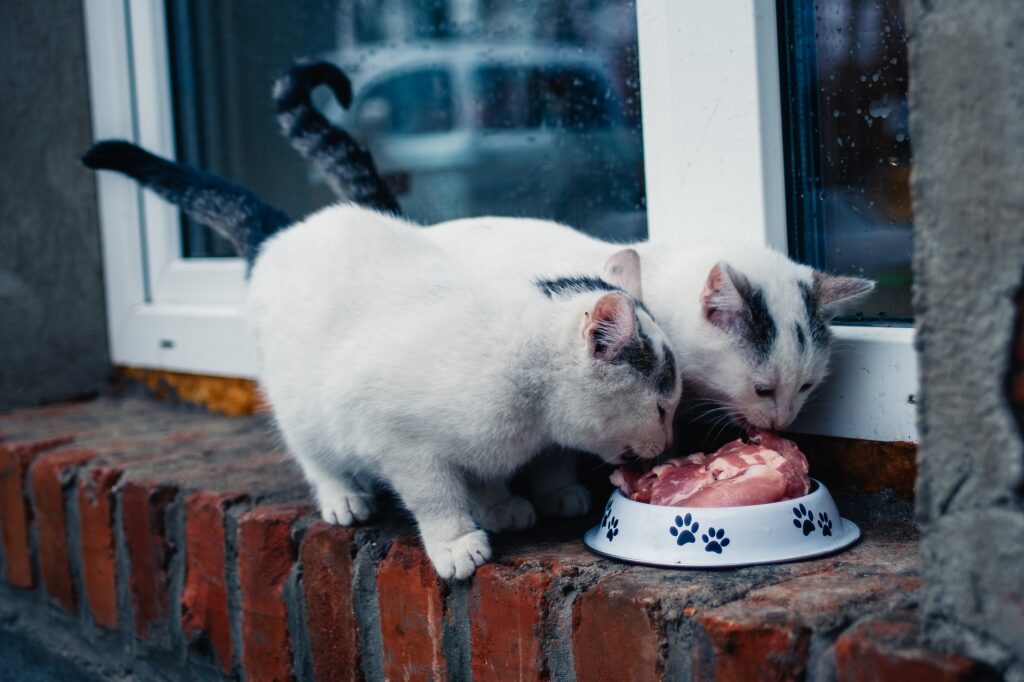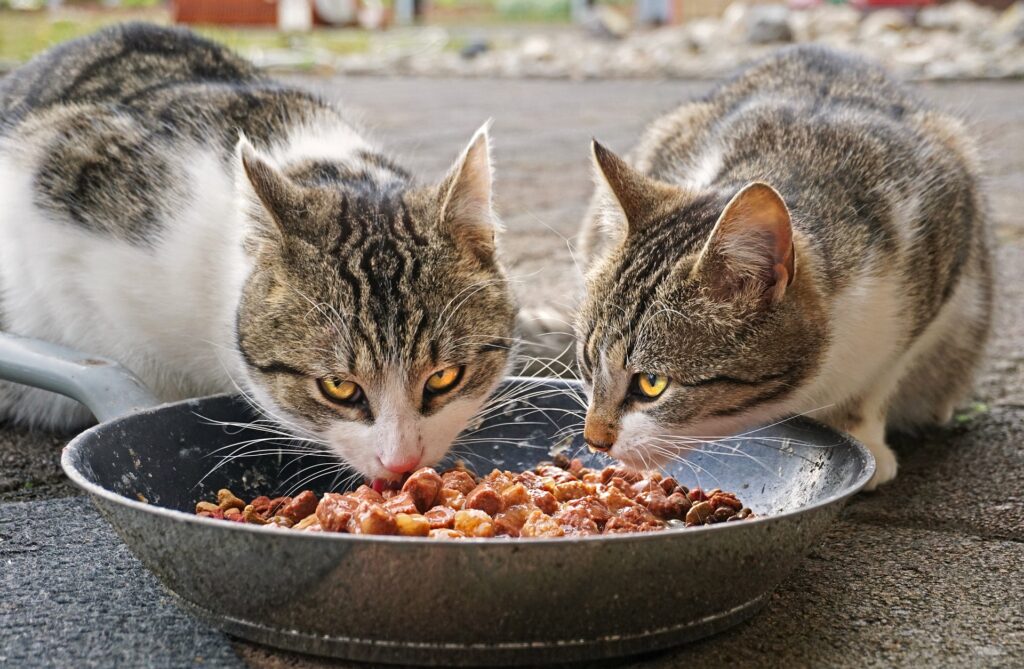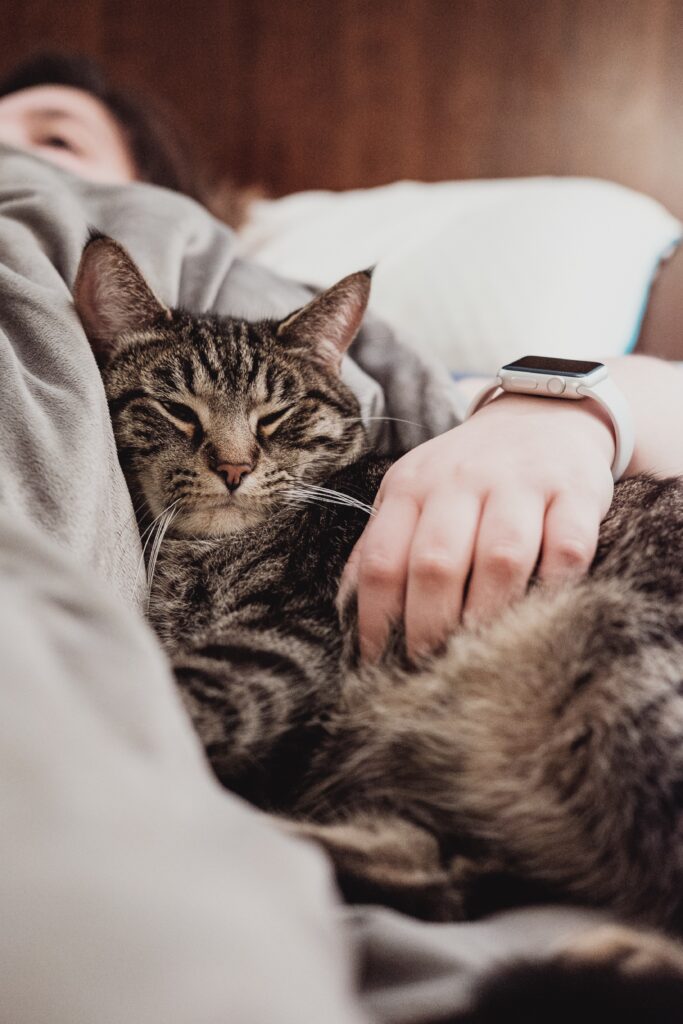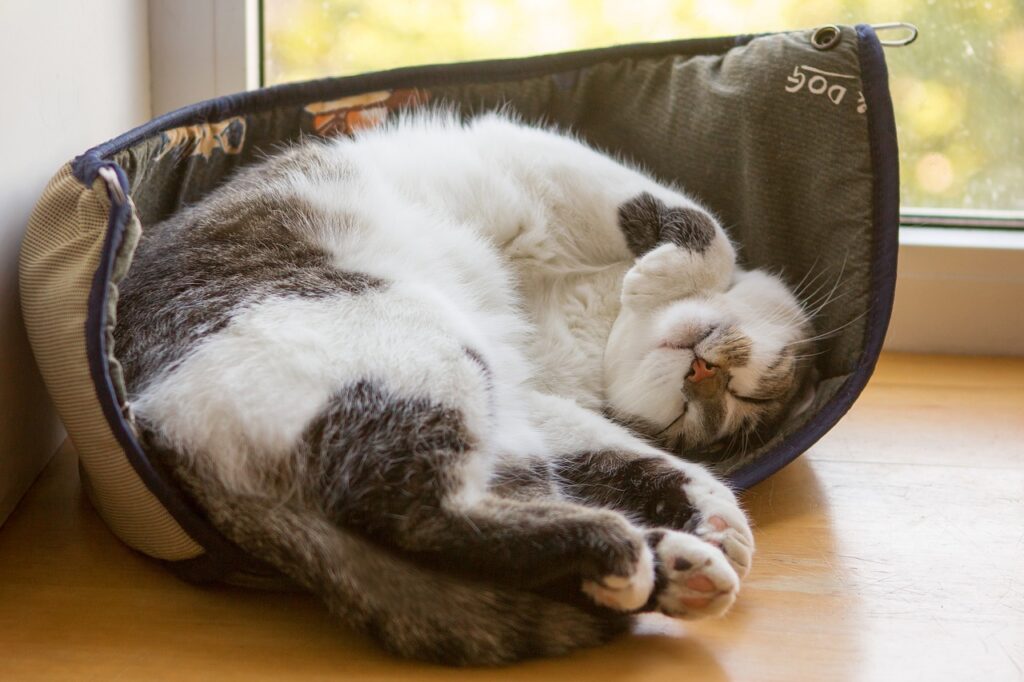This concise manual covers crucial topics like choosing the right food, ensuring hydration, picking treats wisely, understanding portion control, setting feeding routines, and unraveling peculiar eating habits. Let’s make sure your furry friend stays happy and healthy through the simplicity of smart dietary choices and routines.
Wet & Dry Food
Commercial cat food is designed with scientific precision to fulfill your cat’s nutritional requirements, making it a convenient choice. Tailored options are available for kittens and senior cats, catering to their unique dietary needs. For dietary variety, incorporate wet food alongside dry food, but ensure a gradual transition to prevent digestive issues. While fresh products can be tempting, be cautious about potential risks like parasite infections or allergies. Wet food, though low in energy, demands more volume and frequency, potentially contributing to dental problems. In contrast, energy-rich dry foods, while efficient, may leave your cat feeling hungry. Ensure an adequate supply of fresh water to prevent potential issues like constipation. Choose wisely based on your cat’s individual needs and preferences.
Provide Enough Water

Cats are desert animals with a relatively low thirst drive, drawing most of the water they need from the food they consume. However, it is essential to provide your cat with a bowl of fresh water at all times, especially if it has a preference for dry food, which has very low moisture content. If they find the water dirty, smelly, or unfresh, they may refuse to drink it, potentially leading to urinary tract infections and kidney stones. Constipation is also a known complication of dehydration. Some cats prefer to drink running water and might make a beeline for a faucet if it is turned on.
Cat Treats
There are many types of cat treats on the market, so choose wisely. Avoid treats with a high-fat content, and instead opt for those that are high in protein, such as dried fish flakes. Treats can also help keep teeth and gums healthy. The key word with treats is moderation.
Giving Milk
One of the most persistent feline myths is that cats love a saucer of milk. However, not only is milk not essential to a cat’s diet, but many cats are actually lactose-intolerant, so drinking cow’s milk can lead to a stomach upset. The only exception concerns young kittens, who need their mother’s milk to grow up and thrive. If the mother is not around or not producing enough milk, you will have to feed the kitten a special formula, which may be partly cow’s milk.
How Much Food & When?
Cats are obligate carnivores, which means they need meat to survive. Unlike dogs, cats are not usually greedy, and they will adjust their calorie intake to their level of activity. As a result, as a cat grows older and less active, it might start to eat less. If you are concerned, ask us for advice on an older cat’s food intake. In order to prevent competitive eating, it is advisable to give each cat in your household its own feeding bowl.
Setting a Routine
Some people work long hours outside the home and resort to free-feeding their cats. This means the cat has food at its disposal and can eat when it is hungry. In such cases, use dry food, which doesn’t go bad in the heat. However, if your lifestyle allows it, opt to establish a feeding routine for your cat. Feed it two meals a day, at regular times, but leave a bowl of water out at all times. Change water bowls more often.
Where to Feed?

Create a feeding corner in an out-of-the-way area of the kitchen without much foot traffic. Cats have a very keen sense of smell, so keep their eating area clean. If you have a multiple-cat household, give each cat its own bowl. This will prevent squabbles over food and make it easier for you to track each cat’s eating habits.
Be careful not to overfeed your cat, especially if it is an indoor cat without many opportunities to burn calories. Overfeeding could lead to obesity, which brings with it a host of health issues, ranging from difficulty grooming and joint problems, to potentially life-threatening conditions such as diabetes and heart disorders. If you are not overfeeding your cat but it is still putting on weight, it could be due to a hormonal imbalance.
If your cat becomes a fussy eater, try feeding it a different flavor or a different brand of wet food. Keep a list of the flavors it likes. Consider the cleanliness of the feeding station. Remove any scraps of old food and wash the bowl before refilling it. If your cat still will not eat, there may be an underlying health issue.
Although grass has no real nutritional value, it plays an important role in your cat’s diet. Cats eat grass because it facilitates the bringing up of indigestible matter sitting in your cat’s stomach, such as hairballs. If your cat has no access to a lawn, you should provide it with some indoor greenery. Beware, though: some plants may be toxic to your cat. Stick with special kitty grass or opt for cat-friendly herbs like thyme, sage, or parsley.
Grow-your-own-grass kits can be found in most pet stores and well-stocked supermarkets. Just follow the simple directions on the package, and within a week you should have a miniature grassy lawn for your cat. The grass in these containers keeps well for up to three weeks. Alternatively, devote a patch of your garden to plants that your cat might enjoy.



